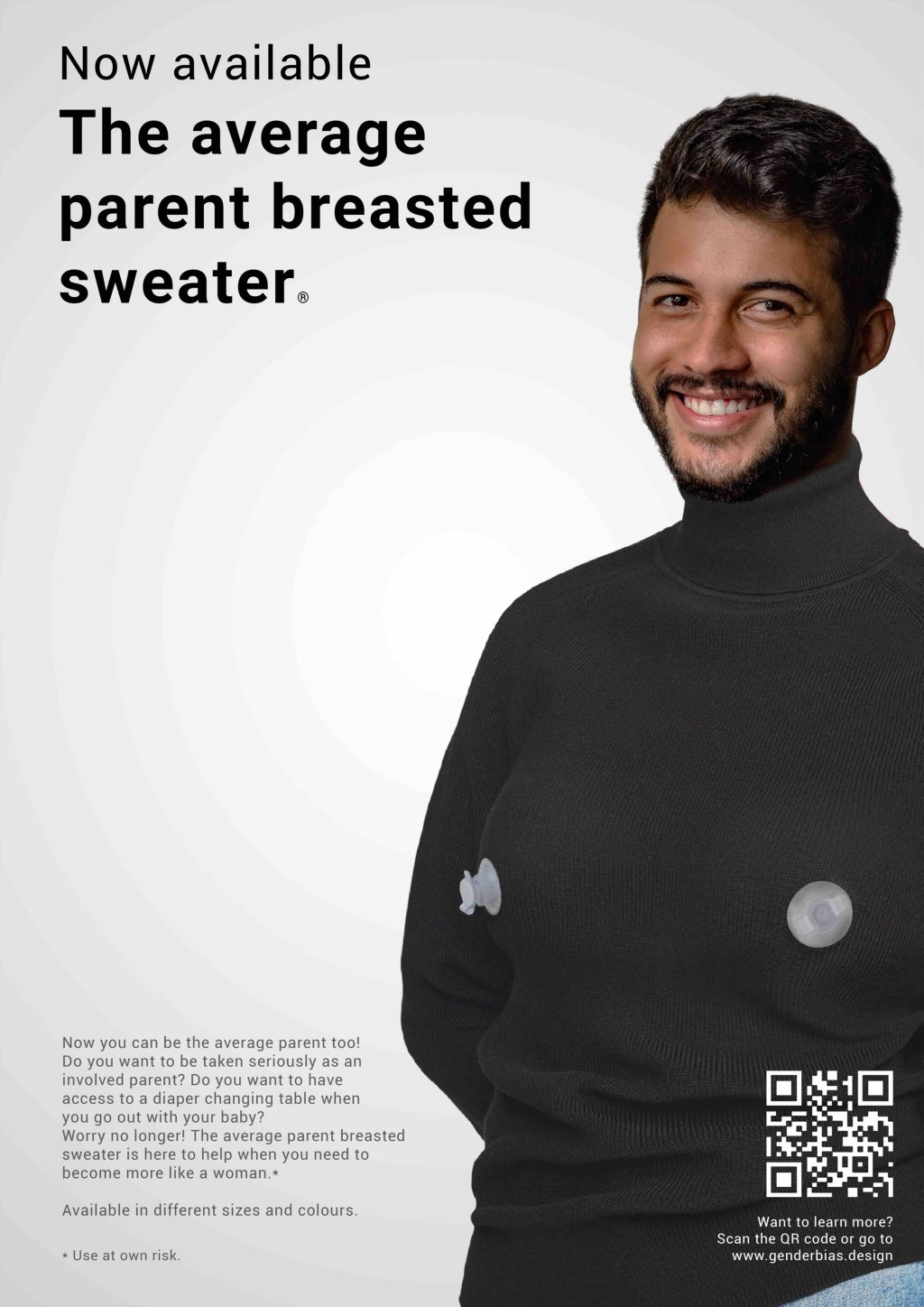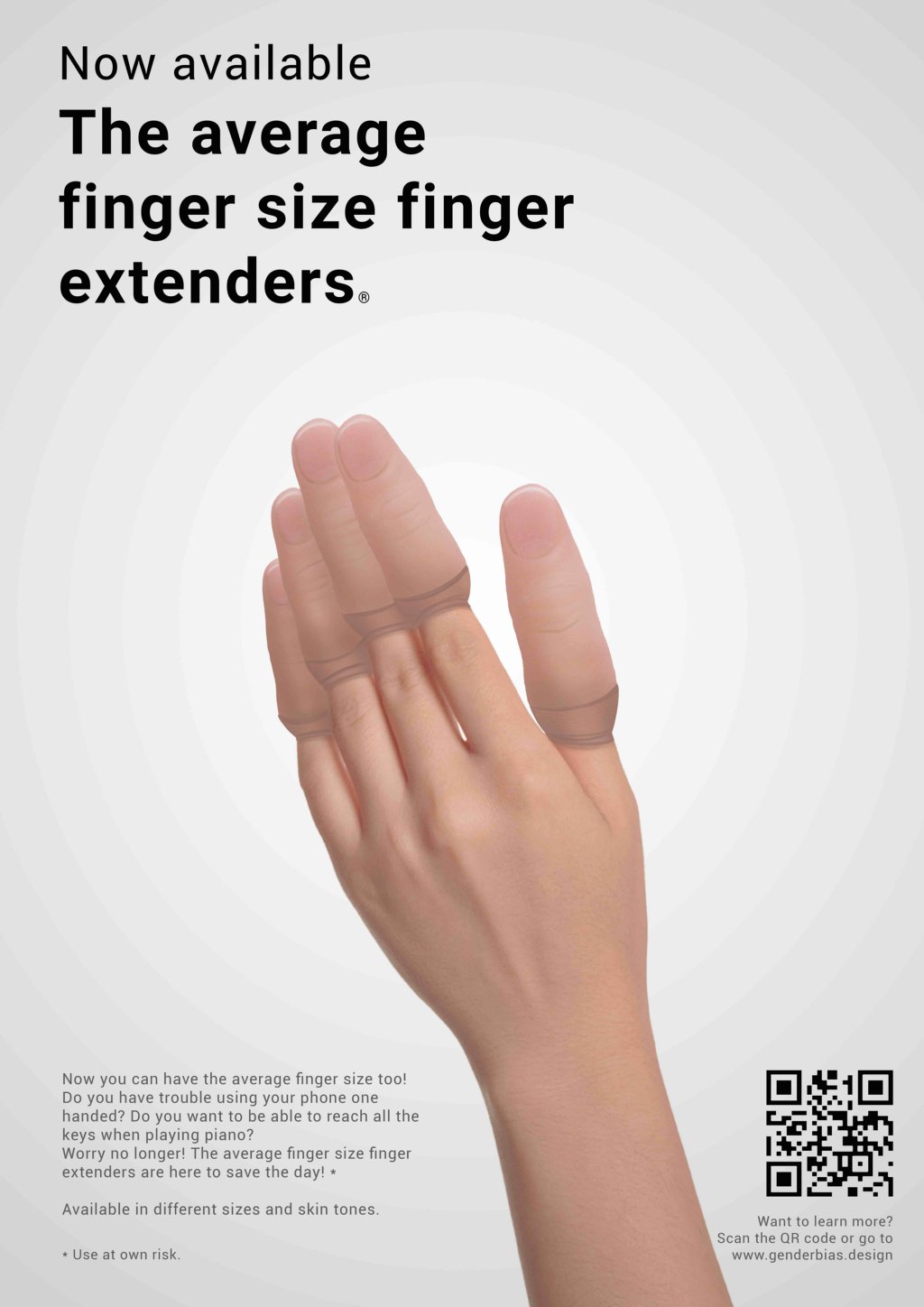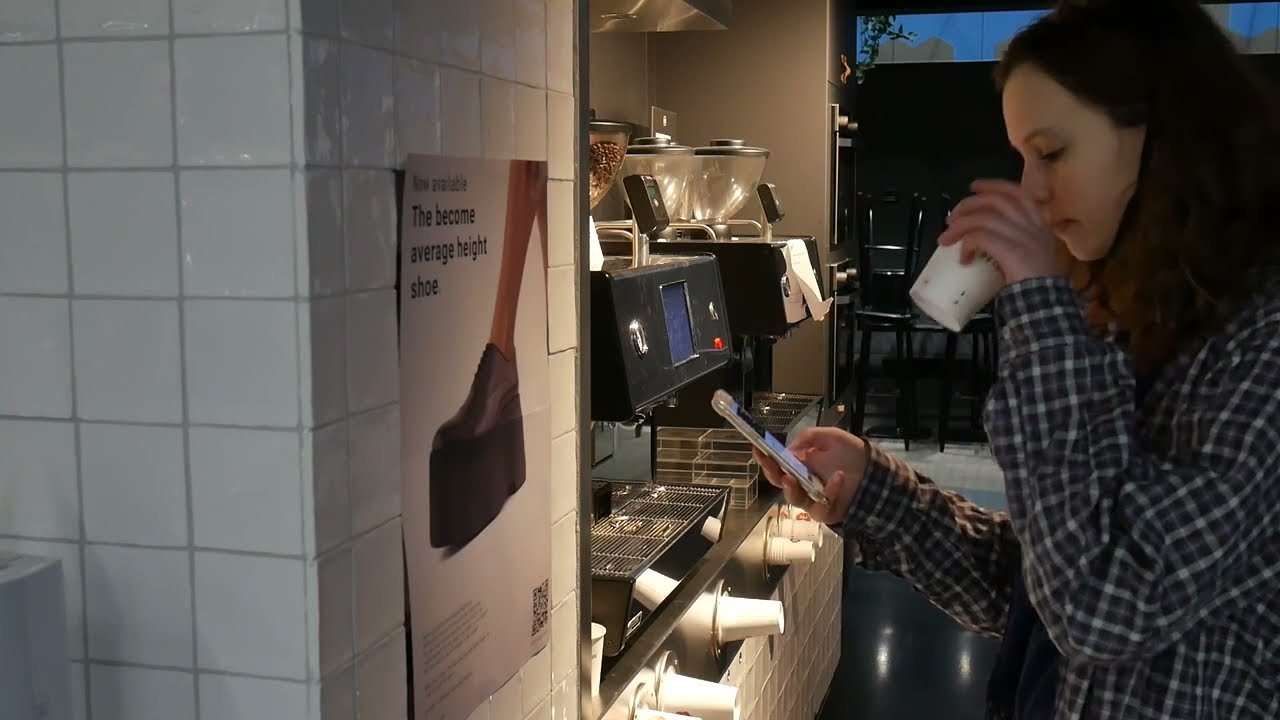One size fits some: Gender bias in design
Although gender bias in design can have a big and far reaching impact, it is hardly discussed in design practice, and design education. How can we make designers aware of this phenomenon, and how can they approach a more inclusive design process when it comes to gender and sex?

The result of this project is the “Become Average” advertising campaign. This campaign offers a product range that helps everyone to become the ‘average person’ that products and services are designed for. These fictional products emphasize the absurdity of gender-biased design.
The product line is advertised on four posters that are designed to capture the attention of designers and design students, and guide them to a website via a QR code.
On this website visitors can learn more about gender bias, find a database of examples of gender-biased products and services, but also find links to inspirational projects. Aditionally, visitors can learn about the three categories of gender-biased design, and the resulting three focus points for a more gender and sex aware design process.
Through the attention that the “Become average” campaign has received, a greater number of people, including designers and design students, have become aware of the importance of gender-considerate design.
Young designers are the decision makers of the future, getting gender-considerate design on their radar will hopefully lead to products and services that work better for men as well as for women. This project has been able to provide them with examples and tools to guide them in the first steps towards a more gender-inclusive design approach.


Share
Contacts
- -Maartje van Proosdij
- -Bregje van Eekelen (Supervisor)
- -Annemiek van Boeijen (Supervisor)



